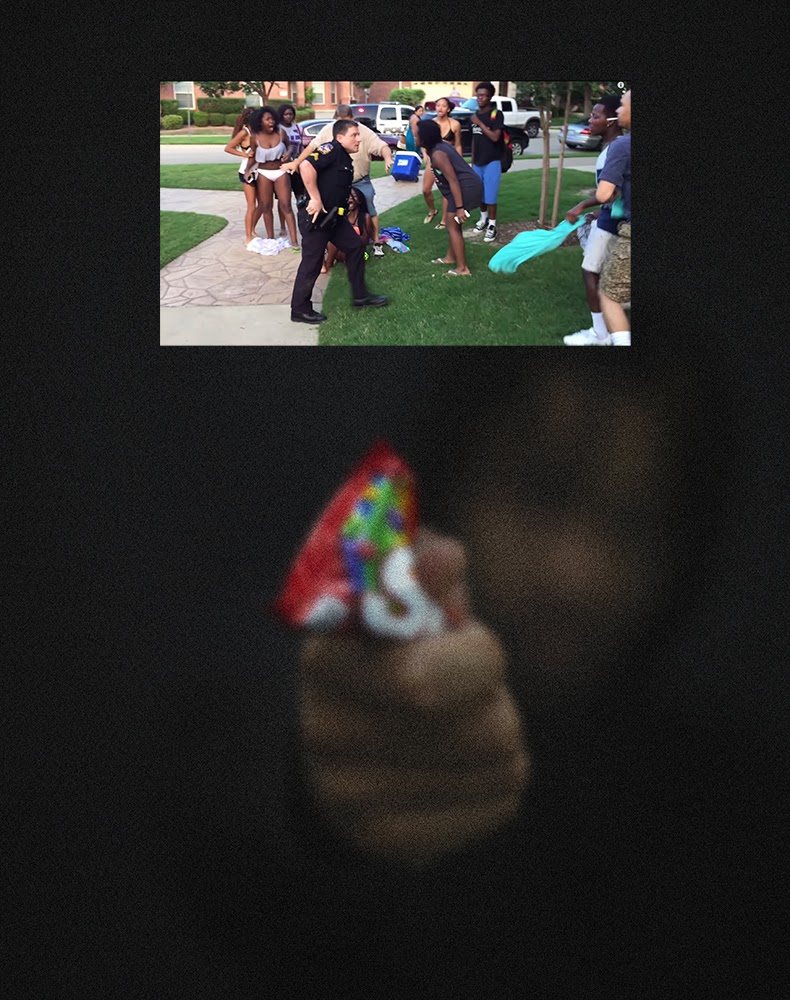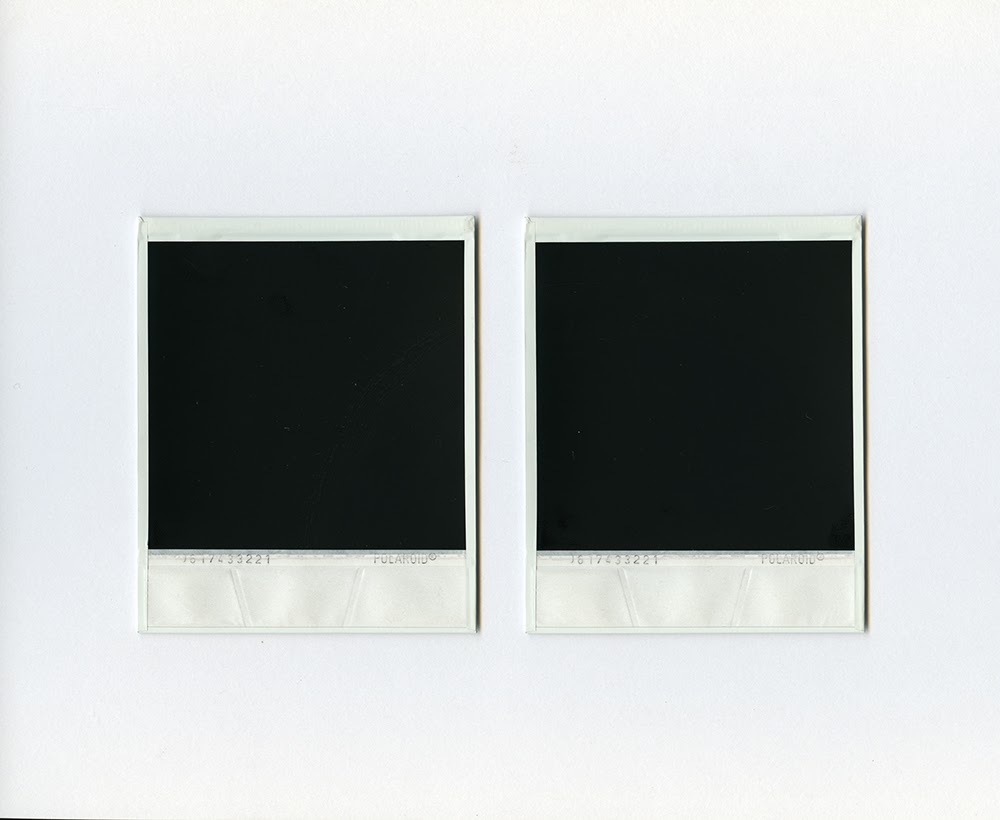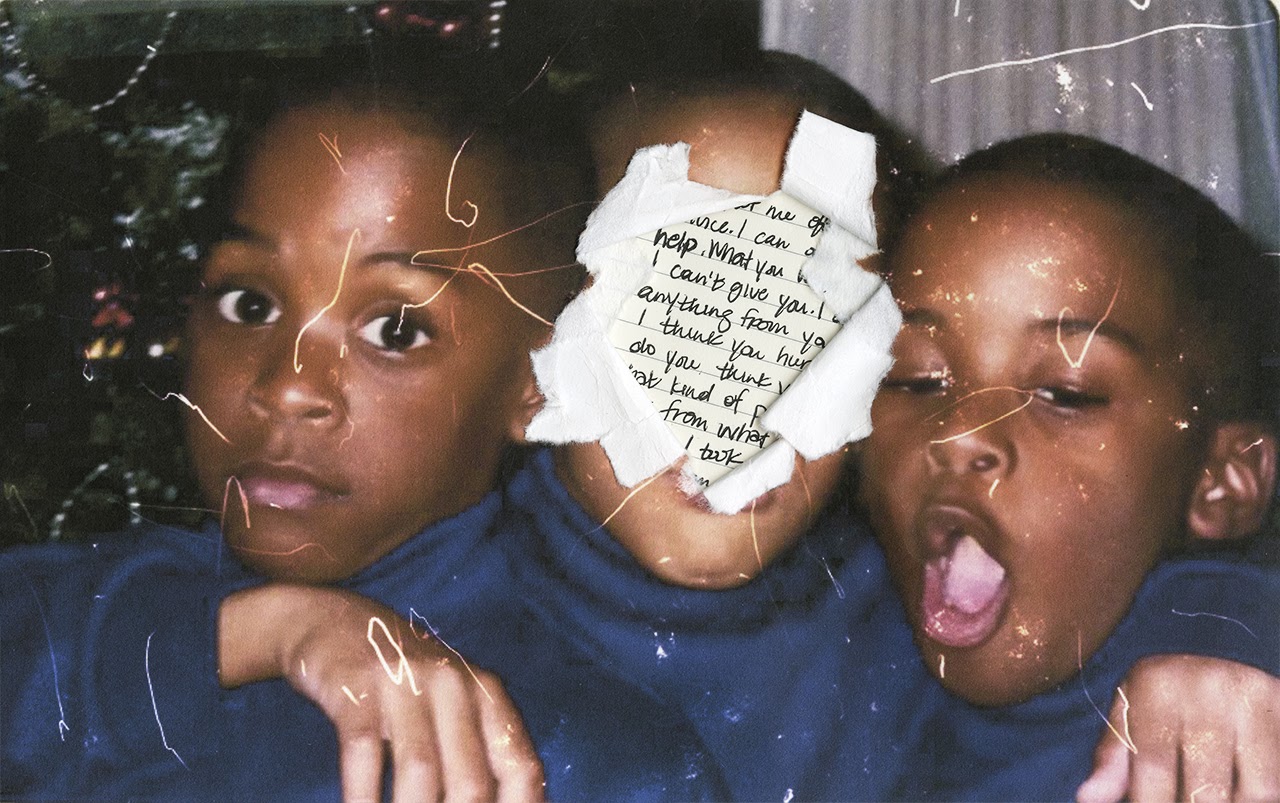
Editor's note: The artist, André Ramos-Woodard, uses they/their gender pronouns. André was selected as a recipient for work they exhibited during Denver’s Month of Photography. In addition to a cash award, grantees are invited to be featured on our digital editorial platform.
André Ramos-Woodard has had enough.
New Collection’s Emerging Artist Scholarship recipient, New Mexico-based photographer and collage artist André Ramos-Woodard isn’t afraid to take a stance. Their work operates as an autobiographical social critique of hetero-normative white society while living in and celebrating an identity of which multiple facets are constantly pushed to the margins. They’re an “overtly queer, proudly black, non-binary activist, ass-kicking, art-making-n***a” and they’re living in a city with a 3.3% population of Black people.

Prior to moving to Albuquerque, NM with their husband to achieve an MFA in Photography at The University of New Mexico, they lived in Nashville, Tennessee and Beaumont, Texas, both of which “were more diverse, [and] of different complexions, including my own,” according to Ramos-Woodard. Albuquerque felt so incalculably different in the human landscape that they suddenly felt alienated, othered beyond the already devastating marginalization of Black bodies in a country founded on the ideologies of white supremacy. It’s a feeling that a great deal of us, including this author, simply cannot relate to in our most mundane daily activities. In a recent Instagram video posted by the artist in reaction to the police killing of Duante Wright, Ramos-Woodard clasped their forehead in their hands and asked their audience if making art was enough:
“I’m tired. I’m tired. I don’t know what to do. I’m tired of seeing this shit. Bro, like what the fuck are we supposed to do? Am I going to keep making art about it? Is that going to change anything? Who’s going to listen? My friends and family? Thank you. My N****s? Thank you. The government? Police officers? The system? Like, this art is important, but sometimes I want to take my ass up there and punch a n***a in the fucking face, because obviously that’s the only thing the system is going to listen to, is someone dying and I don’t mean n****s, I mean n****s at the fucking Capitol.”
The end of the 2:26 video left this art historian bereft of answers. What medium will incite change? Can it? Can art be enough? Because of their intersectional position in this society, Ramos-Woodard pours their anger, their time and their identity into their work. Weapon, George Zimmerman Sold the Gun That He Killed Trayvon Martin with for a ½ Million Dollars, of 2019, cites the 2012 killing of 17-year-old Martin. An anonymous Black figure extends a bag of skittles, the candy Martin was carrying when he was gunned down by Zimmerman. In the top image, a police officer reaches for his gun at a gathering of Black youths at the McKinney, Texas Pool Party Incident in 2015. Ramos-Woodard’s work evokes the youthful innocence of Black lives through two disparate but related images. In both, the viewer is reminded of how Black lives are endlessly interrupted or cut short by police brutality and systemic racism. “Negative, bad, threat, target. Specifically, target,” Woodward lists as they explain the perception of Black Youth at the incident where a police officer pulled his gun out on a group of teens on a summer afternoon.
Woodard’s work isn’t afraid to be exact. It isn’t afraid to name names, make demands and point out the audacity of a capitalist system that allows an individual to spend a half mill on the weapon used in the killing of a Black child.
“Sometimes you need to make a piece that is going to punch someone in the face.”

In a less specifically referential work, “An Abstraction of Two Niggas,” is simply two back-facing Polaroids. Black Individuality, Woodard states, becomes “subsumed by ideology.” While each Polaroid comes with their own specific number, and Americans with their own social security number, and individual personalities, the perception of Black people by non-Blacks often assumes they exist as a singular identity. This work emphasizes the stereotype, abstractly. They speak to the endless spectrum of pigmentation of Black skin, and how, while even so different in appearance, society creates a blanket statement incorrectly eradicating difference: this is Blackness.
André Ramos-Woodard uses their humanity to tell the story of marginalized voices. Their art attempts to give back to a community in mourning, a community in arms. To stand up and fight. They do so by focusing on the quotidian aspects of Black life. Snapshots, candid moments, the everyday working class experience, “quilts, and memories” appear throughout the artists’ oeuvre.
“What I am talking about is the Black Experience,” states Woodard, beyond words.
While Ramos-Woodard and I agree that there will never be lasting systemic change in this country until something drastic occurs by the hands of the working class, (holla at our comrades,) we agreed that art still functions as a revolutionary act.
What does art do? Is it enough? Countless art movements since the dawning of the European Avant-Garde have attempted to answer this question. From the socialist agit-prop of the Russian Constructivists to the Civil-Rights era collages of Romare Bearden, the visual landscape has created and continues to create a space for political and social critique. Mediums from paintings, to sculpture and assemblage have signaled the viewer towards revolution, towards change. Visual art allows the artist the space to engage with their audience critically on matters of our society, our humanity, our our-ness in ways that often invite questions to the viewer, allowing them to create their own interpretations. The impact of visual language most certainly has the ability to influence change. As Ramos-Woodard states,” If we continue to see people die, YES. We feel. We gain, and we create a collective impact on the viewer.”
Andre Ramos-Woodard is graduating with an MFA in Photography from the University of New Mexico in 2021 with their culminating thesis Black Snaffu: Situation Niggas All Fucked Up. This body of photographic and collage work delves into Blackness as portrayed in popular media. The artist re-appropriates American cartoon characters, images of minstrels and black-face performers while juxtaposing them with our current societal dialogue on systemic racism. After graduation they plan to continue their art-making practice in Houston, Texas with their husband.
IG: @andreduane




